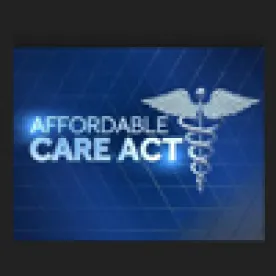This post concludes our half-year series of posts focusing on the Affordable Care Act’s reporting requirements. These requirements are challenging in the extreme. Carriers and employers, and their vendors, service providers and strategic partners, have scrambled up a steep learning curve. And in a few short months—a few more than originally anticipated as a result of Notice 2016-4, which was covered in last week’s post —compliance will begin in earnest. This post offers some predictions about how we expect compliance to unfold.
(1) MEC Reporting will work as advertised—for the most part
For purposes of the reporting of minimum essential coverage (MEC) under Code § 6055 on Forms 1094-B and 1095-B, carriers are largely relying on home-grown software. MEC reporting in the case of fully-insured plans has its challenges, principally relating to data collection. But the regulatory regime is not all that complex. As a consequence, there is no reason to anticipate that these systems will not work, i.e., that the inputs and outputs will match the requirements of the law and applicable regulations even if the particulars of the “black box” vary from carrier-to-carrier. Expect a good deal of finger pointing over the timely collection of correct information, however, particularly as it relates to social security numbers. One hopes that the extensions of time provided by Notice 2016-4 will go a long way toward alleviating this problem.
(2) Software solutions for applicable large employers may work and will converge
Where applicable large employers are concerned, the level of reporting complexity rises exponentially. (Just compare the Forms 1094-B and 1095-B to the Forms 1094-C and 1095-C to see why.) There are currently a good number of expert systems available to employers to assist with their reporting obligations. As best we can tell, vendors have generally been diligent in their efforts to beta test their products. But none of these products has yet been tested live and in real time with real data.
The software solutions for reporting by applicable large employers under Code § 6056 have for the most part been developed by third parties, including payroll companies, brokers, venture-funded and other start-ups, industry-focused organizations, and interested tinkerers, among others. In contrast to MEC reporting, these products are not at all uniform. Some favor particular compliance approaches. For example, it is not uncommon for vendors to strongly urge or require customers to use the Federal Poverty Line affordability safe harbor. This simplifies the reporting on Form 1095-C, Part II, Line 15, but at a cost to employers. Others lack full functionality relating to transition rules. This will change as vendors gain experience and the industry consolidates. In time, these software products will converge such that the inputs and outputs will align seamlessly with all of the requirements of the law and applicable regulations.
(3) For employers, the first year will be chaos
The run-up even to the now delayed reporting deadline will involve a good deal of frantic, last-minute effort. Employers have been asked to respond to detailed data requests from their vendors to provide information from disparate sources, e.g., payroll, HRIS, and the employer’s group health plan, among others. Complicating matters is that some vendor requests ask for information that is not necessary to complete the reporting process. The biggest challenges will arise in cases where the data collection and collating cannot be automated. For companies of sufficient size, this could mean that timely compliance is out of the question, which will require a “Plan B” (i.e., late filing accompanied by a request for an abatement of penalties).
(4) Also for employers, there will be some unwelcome surprises
The reporting process inevitably involves a detailed examination by a third party vendor of the approach that the applicable large employer adopted to comply with the ACA employer shared responsibility rules. This examination can reveal compliance problems and lapses. For example, a vendor and employer might differ on the classification of a cohort of employees as variable hour by an employer that has adopted the look-back measurement method. If that cohort is sufficiently large, the employer could be facing penalties under Code § 4980H(a). Admittedly, the chance of a lapse on this scale is lessened by the 2015 transition rule that coverage need only be provided to 70% of the employer’s full-time employees rather than 95%, but the chance is still greater than zero. A similar problem might arise if the employer properly classifies variable hour employees but fails to make a timely offer of coverage following the close of the applicable administrative period to those who qualify as full-time.
(5) Despite items (1) through (4), there will be few train wrecks
In Notice 2016-4, the IRS extended the 2015 reporting deadlines as follows:
-
The due dates for furnishing to individuals Form 1095-B and Form 1095-C were extended from February 1, 2016, to March 31, 2016; and
-
The due dates for filing with the Service Form 1094-B, Form 1095-B, Form 1094-C, and Form 1095-C were extended from February 29, 2016, to May 31, 2016, if not filing electronically, and from March 31, 2016, to June 30, 2016 if filing electronically.
This relief is welcome to be sure. But an equally important feature of the notice is emphasis on the relief available to late filers. The strong implication is that the IRS is willing to grant a wide berth to organizations that approach their reporting obligations in good faith under existing rules governing the abatement of penalties. Though not explicitly stated, it’s not difficult to infer the converse: the IRS will have little sympathy for employers who fail to operate in good faith—including those who claim that they filed late because they were unaware of the reporting rules.



 />i
/>i

